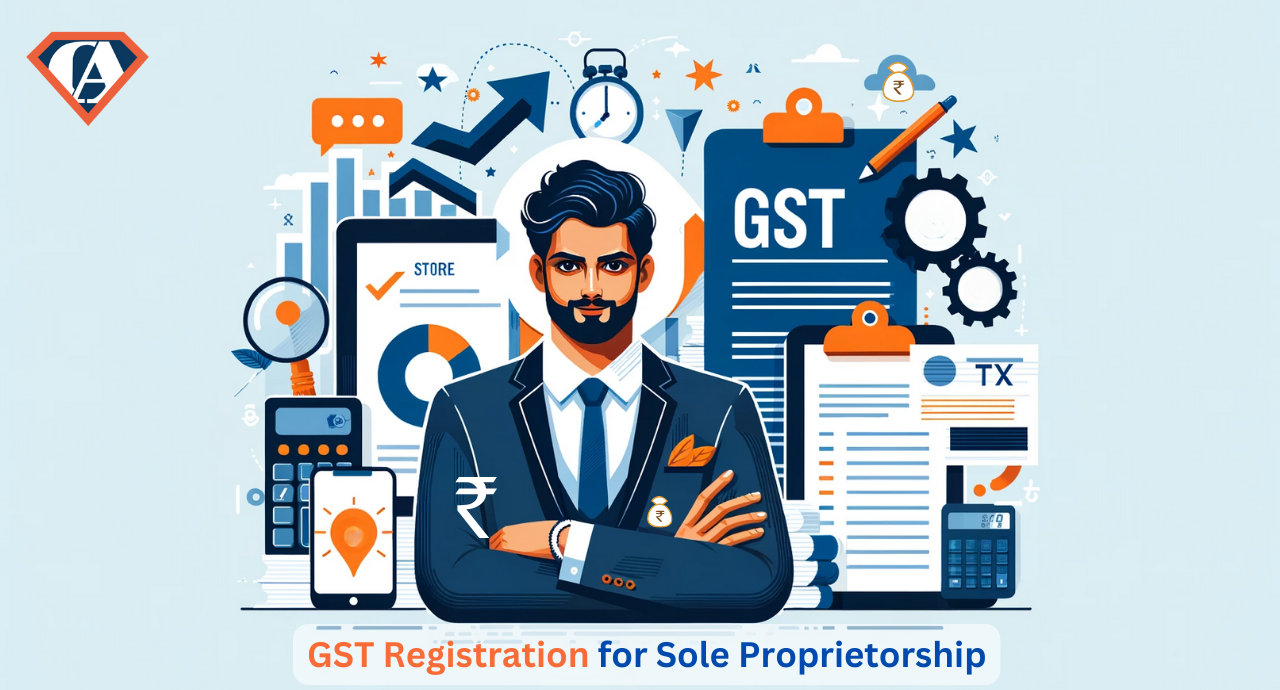Browsing the Intricacies of GST Registration: Specialist Tips to Guarantee a Smooth and Effective Registration
Browsing the elaborate landscape of GST enrollment can be a difficult job for businesses aiming to comply with regulative requirements. By exploring the vital aspects and common obstacles associated with GST enrollment, businesses can furnish themselves with the understanding required to navigate this complicated surface efficiently.
Understanding GST Enrollment Refine
Browsing through the details of the GST registration procedure needs a thorough understanding of the documentation and requirements included. The process begins by figuring out whether a business is qualified for GST registration based on aspects such as yearly turn over, interstate transactions, and the kind of goods or solutions offered.
In addition, it is vital to guarantee that all information entered in the application are precise and up to date, as any disparities might bring about hold-ups or denial of the enrollment. Comprehending the various GST types and their particular usages is also crucial in completing the enrollment process smoothly. By familiarizing oneself with these demands and remaining arranged throughout the application process, companies can navigate the GST registration procedure effectively and efficiently.
Essential Documentation for Registration
In order to efficiently finish the GST enrollment procedure, companies have to gather and send crucial documents that substantiates their qualification and supports the information provided in the application. The key files required for GST enrollment commonly include proof of company consolidation or address, identification and registration proof of the key entrepreneur or partners, savings account declarations, organization PAN card, and evidence of organization address such as energy expenses or rent out contract.

Guaranteeing that all required documentation is accurate, up to date, and in the prescribed style is critical to avoid delays or problems throughout the GST registration process. Companies should very carefully review the record needs described by the tax authorities to promote a smooth and successful enrollment.
Common Risks to Avoid
An essential element of the GST enrollment procedure includes steering clear of common errors that can restrain the smooth conclusion of enrollment for services. Mistakes in information such as the business address, name, or frying pan can lead to hold-ups in the enrollment procedure.
An additional usual mistake is not understanding the threshold for registration. Companies must sign up for GST if their annual turn over exceeds the recommended limitation, failing which can lead to penalties and legal repercussions (Simplify your GST registration process with our expert services in Singapore). For that reason, it is crucial for companies to remain informed regarding the registration demands and target dates to stay clear of non-compliance concerns.
In addition, some services ignore the value of prompt submission of registration files. Hold-ups in submitting necessary kinds and files can lengthen the registration procedure unnecessarily. To stop this, companies must develop a timeline for celebration and sending all needed paperwork quickly. By preventing these common pitfalls, services can navigate the GST registration procedure efficiently and ensure compliance with the tax obligation policies.
Optimizing Input Tax Credit Rating Perks

Companies should likewise on a regular basis reconcile their acquisitions with the auto-generated input tax obligation credit report readily available on the GST visit site website to recognize any kind of discrepancies and remedy them immediately. It is recommended to conduct routine testimonials of input tax obligation credit rating claims to make certain compliance with GST legislations and guidelines. By vigilantly adhering to these techniques, companies can optimize their input tax obligation debt benefits, enhance their profits, and stay compliant with GST requirements.
Expert Tips for Smooth Enrollment
Smooth registration under the GST regimen begins with thorough interest to detail in making certain all required records and info are ready precisely and in conformity with regulatory demands. To kickstart the enrollment procedure perfectly, organizations must first determine their eligibility for GST enrollment based upon turn over and company activities. It is essential to gather and arrange vital papers such as frying pan card, my latest blog post evidence of organization address, identification and enrollment evidence of marketers, financial institution declarations, and business-specific files like rental arrangements or energy costs for the facilities. Ensuring that all information given is consistent across papers can avoid hold-ups or beings rejected throughout the enrollment process. Furthermore, confirming the accuracy of information gone into in the GST enrollment application is extremely important. Any mistakes or inconsistencies could lead to difficulties in the future. Looking for professional advice or using on the internet sources offered by the tax authorities can also assist in a smoother enrollment process, helping companies stay clear of usual challenges and navigate the complexities of GST registration easily.

Final Thought
To conclude, browsing the intricacies of GST registration requires an extensive understanding of the procedure, vital documentation, common risks to stay clear of, and strategies to take full advantage of input tax debt benefits. By following expert tips and guidelines, companies can guarantee a effective and smooth enrollment process, ultimately leading to conformity with GST laws and taking full advantage of tax advantages.
By acquainting oneself with these requirements and remaining arranged throughout the application procedure, organizations can navigate the GST enrollment process successfully and efficiently.
A critical element of the GST enrollment procedure entails steering clear of common mistakes that can hinder the smooth completion of enrollment for companies. By avoiding these typical challenges, organizations can navigate the GST enrollment process efficiently and ensure compliance with the tax obligation regulations.
To kickstart the enrollment procedure seamlessly, companies ought to first determine their eligibility for GST enrollment based on turnover and service tasks. Seeking professional guidance view publisher site or making use of on-line sources provided by the tax authorities can additionally aid in a smoother enrollment process, aiding businesses stay clear of typical challenges and navigate the complexities of GST enrollment with convenience.